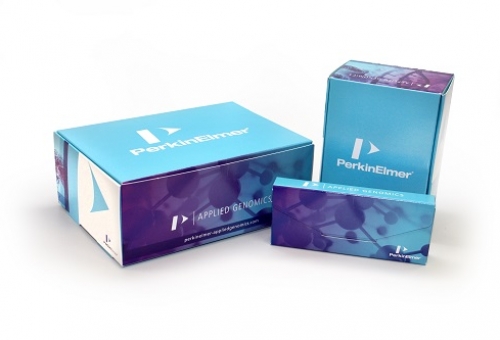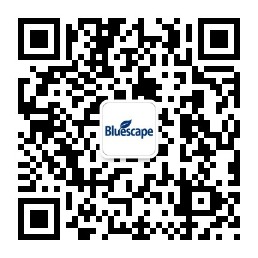
NEXTFLEX® 18S ITS Amplicon-Seq Kit
Low PCR bias and high on-target reads
Low input – As low as 1 ng of genomic DNA
Functionally validated on the Illumina® MiSeq® sequencer
- Product description
- Kit Contents
- Citations
NEXTFLEX® 18S ITS Amplicon-Seq Kit
Validated library prep for 18S ITS metagenomics analysis of eukaryotes.
Ideal for Gene Identification of Uncultured Fungal & Micro-Eukaryotic Organisms
The NEXTFLEX® 18S ITS Amplicon-Seq Kit is designed to prepare multiplexed amplicon libraries that span both the ITS1 and ITS2 hypervariable Internal Transcribed Spacer regions of eukaryotic 18S ribosomal RNA (rRNA) genes for identification of uncultured fungal and micro-eukaryotic organisms. These libraries are compatible with paired-end sequencing on the Illumina® sequencing platforms.

Together, the ease of performing library preparation, extreme multiplexing capabilities obtained with the NEXTFLEX 18S ITS Amplicon-Seq Kit and the high sensitivity of NGS provide a convenient and powerful method to detect unique components of eukaryotic communities.
Fast 18S Analysis of Fungi
There are two steps involved in 18S ITS amplicon processing: an initial PCR amplification using customized PCR primers that target the ITS domains, and a subsequent PCR amplification that integrates relevant flow cell binding domains and unique 12 base pair sample indices. A limited number of cleanup steps ensures maximum recovery of amplicons for downstream sequencing. It is highly recommended that sequencing of 18S ITS libraries be performed using the MiSeq® V3 reagent kit (2X300).
Optimized 18S Amplicon-Seq Protocol Offers Lower PCR Bias and Fewer Off-target Reads
The protocol incorporated in the NEXTFLEX 18S ITS Amplicon-Seq Kit offers better sequencing results than can be obtained using traditional 18S sequencing protocols. The incorporation of the second PCR step in the protocol for the addition of the sample-specific index reduces the number of off-target reads typically encountered during amplicon sequencing.
Sequencing of the 18S rRNA Gene
The ITS1 and ITS2 regions within the highly conserved 18S rRNA gene are the gold standards used in eukaryotic molecular phylogeny. These ITS regions contains a high level of sequence variation between closely related fungal species and are easy targets to amplify from minimal quantities of DNA due to the high number of copies found per genome, ranging from 10-200. These are excellent markers for detecting both rare species and those in great abundance within complex communities.
Features
Low PCR bias and high on-target reads
Fast library prep protocol that covers both ITS1 and ITS2 of 18S rRNA gene
Low input – As low as 1 ng of genomic DNA
Flexible barcode options– barcoded primers available for multiplexing of up to 384 libraries
Compatible with regular Illumina® sequencing primers
Automation protocols are now available for the PerkinElmer Sciclone® NGS and NGSx Workstations to automate your 18S sequencing
Functionally validated on the Illumina® MiSeq® sequencer
Kit Specs
| Cat # | Name | Quantity |
| NOVA-4210-02 | NEXTflex™ 18S ITS Amplicon-Seq Kit (12 Barcodes) | 24 RXNS |
KIT CONTENTS
NEXTFLEX® PCR Master Mix
NEXTFLEX® 18S ITS PCR I Primer Mix
NEXTFLEX® PCR II Barcoded Primer Mix
Resuspension Buffer
Nuclease-free Water
REQUIRED MATERIALS NOT PROVIDED
1 ng – 50 ng high-quality genomic DNA in up to 36 µL nuclease-free water for each library
96 well PCR Plate Non-skirted (Phenix Research, Cat # MPS-499) or similar
Adhesive PCR Plate Seal (Bio-Rad®, Cat # MSB1001)
Agencourt® AMPure® XP 5 mL (Beckman Coulter® Genomics, Cat # A63880)
Magnetic Stand – 96 (Thermo Fisher® Scientific, Cat # AM10027) or similar
Thermocycler
2, 10, 20, 200 and 1000 µL pipettes / multichannel pipettes
Nuclease-free barrier pipette tips
Vortex
80% Ethanol, freshly prepared (room temperature)
Davey, M. P., Norman, L., Sterk, P., Huete-Ortega, M., Bunbury, F., Loh, B. K., . . . Smith, A. G. (2019). Snow algae communities in Antarctica – metabolic and taxonomic composition. New Phytologist. doi:10.1111/nph.15701








